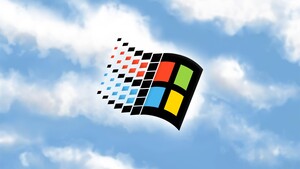Hallo PC-ler,
heute große Freude, als die neue 500 GB SSD von Samsung kam.
Samsung bietet ja eine gute Klonsoftware an, hat auch alles geklappt, von C auf E geklont, hat etwa eine Stunde gedauert.
Ich habe 2 Platten im PC, die alte HDD 320GB und die Neue Samsung 500 GB
Vom Dateimanager wird die neue Samsung auch gut erkannt als Laufwerk E, mit allen Daten von Festplatte C
Also:
PC DELL Optiplex 990
Alte HDD Platte C
Neue SSD Platte E
Beide Platten sind im PC verbaut und lassen sich mit dem Dateimanager ansprechen.
Wie kann ich dem System nun sagen, dass Windows mit der SSD starten soll?
Beim Booten im Bios habe ich auch SSD angeklickt, ich lande aber immer in einem schwarzen Bildschirm
Einfach die alte HDD als /E umbenennen und die SSD mit / C geht ja wohl nicht.
Ich habe das System mit spaccy ausgelesen, vielleicht kann jemand einen Hinweis geben.
Storage
Hard drives
ST3500418AS ATA Device
Manufacturer Seagate
Form Factor 3.5"
Heads 16
Cylinders 60.801
Tracks 15.504.255
Sectors 976.768.065
SATA type SATA-II 3.0Gb/s
Device type Fixed
ATA Standard ATA8-ACS
Serial Number 6VMS1SCB
Firmware Version Number CC46
LBA Size 48-bit LBA
Power On Count 2319 times
Power On Time 668,0 days
Speed 7200 RPM
Features S.M.A.R.T., AAM, NCQ
Max. Transfer Mode SATA II 3.0Gb/s
Used Transfer Mode SATA II 3.0Gb/s
Interface SATA
Capacity 465 GB
Real size 500.107.862.016 bytes
RAID Type None
S.M.A.R.T
Status Good
Temperature 33 °C
Temperature Range OK (less than 50 °C)
S.M.A.R.T attributes
Attribute name Real value Current Worst Threshold Raw Value Status
01 Read Error Rate 0 111 99 6 000278CD6C Good
03 Spin-Up Time 0 ms 97 97 0 0000000000 Good
04 Start/Stop Count 4.665 96 96 20 0000001239 Good
05 Reallocated Sectors Count 0 100 100 36 0000000000 Good
07 Seek Error Rate 0 84 60 30 000E173840 Good
09 Power-On Hours (POH) 668d 1h 82 82 0 0000003EA1 Good
0A Spin Retry Count 0 100 100 97 0000000000 Good
0C Device Power Cycle Count 2.319 98 98 20 000000090F Good
B7 SATA Downshift Error Count 2 98 98 0 0000000002 Good
B8 End-to-End error / IOEDC 0 100 100 99 0000000000 Good
BB Reported Uncorrectable Errors 0 100 100 0 0000000000 Good
BC Command Timeout 2 100 100 0 0000000002 Good
BD High Fly Writes (WDC) 0 100 100 0 0000000000 Good
BE Airflow Temperature 33 °C 67 52 45 0021180021 Good
C2 Temperature 33 °C 33 48 0 0000000021 Good
C3 Hardware ECC Recovered 0 45 20 0 000278CD6C Good
C5 Current Pending Sector Count 0 100 100 0 0000000000 Good
C6 Uncorrectable Sector Count 0 100 100 0 0000000000 Good
C7 UltraDMA CRC Error Count 1 200 200 0 0000000001 Good
F0 Head Flying Hours 930d 17h 100 253 0 0000005741 Good
F1 Total LBAs Written 1.739.594.417 100 253 0 0067B01AB1 Good
F2 Total LBAs Read 1.526.005.561 100 253 0 005AF4FF39 Good
Partition 0
Partition ID Disk #0, Partition #0
File System NTFS
Volume Serial Number 0A2FBD4C
Size 99 MB
Used Space 68 MB (68%)
Free Space 31,4 MB (32%)
Partition 1
Partition ID Disk #0, Partition #1
Disk Letter C:
File System NTFS
Volume Serial Number A033B5C2
Size 465 GB
Used Space 340 GB (73%)
Free Space 124 GB (27%)
Samsung SSD 850 EVO 500GB ATA Device
Manufacturer SAMSUNG
Heads 16
Cylinders 60.801
Tracks 15.504.255
Sectors 976.768.065
SATA type SATA-III 6.0Gb/s
Device type Fixed
ATA Standard ACS2
Serial Number S21JNXAGC81108W
Firmware Version Number EMT02B6Q
LBA Size 48-bit LBA
Power On Count 551 times
Power On Time 135,2 days
Speed Not used (SSD Drive)
Features S.M.A.R.T., NCQ, TRIM, SSD
Max. Transfer Mode SATA III 6.0Gb/s
Used Transfer Mode SATA III 6.0Gb/s
Interface SATA
Capacity 465 GB
Real size 500.107.862.016 bytes
RAID Type None
S.M.A.R.T
Status Good
Temperature 26 °C
Temperature Range OK (less than 50 °C)
S.M.A.R.T attributes
Attribute name Real value Current Worst Threshold Raw Value Status
05 Reallocated Sectors Count 0 100 100 10 0000000000 Good
09 Power-On Hours (POH) 135d 4h 99 99 0 0000000CAC Good
0C Device Power Cycle Count 551 99 99 0 0000000227 Good
B1 Wear Leveling Count 8 99 99 0 0000000008 Good
B3 Used Reserved Block Count (Total) 0 100 100 10 0000000000 Good
B5 Program Fail Count (Total) 0 100 100 10 0000000000 Good
B6 Erase Fail Count (Total) 0 100 100 10 0000000000 Good
B7 Runtime Bad Block (Total) 0 100 100 10 0000000000 Good
BB Uncorrectable Error Count 0 100 100 0 0000000000 Good
BE Temperature Exceed Count 26 74 55 0 000000001A Good
C3 ECC Rate 0 200 200 0 0000000000 Good
C7 CRC Error Count 0 100 100 0 0000000000 Good
EB Power Recovery Count 21 99 99 0 0000000015 Good
F1 Total LBAs Written 7.659.171.540 99 99 0 00C885AED4 Good
Partition 0
Partition ID Disk #1, Partition #0
Disk Letter F:
File System NTFS
Volume Serial Number FC7EEE4C
Size 99 MB
Used Space 30,4 MB (30%)
Free Space 69 MB (70%)
Partition 1
Partition ID Disk #1, Partition #1
Disk Letter E:
File System NTFS
Volume Serial Number A033B5C2
Size 465 GB
Used Space 333 GB (71%)
Free Space 131 GB (29%)
heute große Freude, als die neue 500 GB SSD von Samsung kam.
Samsung bietet ja eine gute Klonsoftware an, hat auch alles geklappt, von C auf E geklont, hat etwa eine Stunde gedauert.
Ich habe 2 Platten im PC, die alte HDD 320GB und die Neue Samsung 500 GB
Vom Dateimanager wird die neue Samsung auch gut erkannt als Laufwerk E, mit allen Daten von Festplatte C
Also:
PC DELL Optiplex 990
Alte HDD Platte C
Neue SSD Platte E
Beide Platten sind im PC verbaut und lassen sich mit dem Dateimanager ansprechen.
Wie kann ich dem System nun sagen, dass Windows mit der SSD starten soll?
Beim Booten im Bios habe ich auch SSD angeklickt, ich lande aber immer in einem schwarzen Bildschirm
Einfach die alte HDD als /E umbenennen und die SSD mit / C geht ja wohl nicht.
Ich habe das System mit spaccy ausgelesen, vielleicht kann jemand einen Hinweis geben.
Storage
Hard drives
ST3500418AS ATA Device
Manufacturer Seagate
Form Factor 3.5"
Heads 16
Cylinders 60.801
Tracks 15.504.255
Sectors 976.768.065
SATA type SATA-II 3.0Gb/s
Device type Fixed
ATA Standard ATA8-ACS
Serial Number 6VMS1SCB
Firmware Version Number CC46
LBA Size 48-bit LBA
Power On Count 2319 times
Power On Time 668,0 days
Speed 7200 RPM
Features S.M.A.R.T., AAM, NCQ
Max. Transfer Mode SATA II 3.0Gb/s
Used Transfer Mode SATA II 3.0Gb/s
Interface SATA
Capacity 465 GB
Real size 500.107.862.016 bytes
RAID Type None
S.M.A.R.T
Status Good
Temperature 33 °C
Temperature Range OK (less than 50 °C)
S.M.A.R.T attributes
Attribute name Real value Current Worst Threshold Raw Value Status
01 Read Error Rate 0 111 99 6 000278CD6C Good
03 Spin-Up Time 0 ms 97 97 0 0000000000 Good
04 Start/Stop Count 4.665 96 96 20 0000001239 Good
05 Reallocated Sectors Count 0 100 100 36 0000000000 Good
07 Seek Error Rate 0 84 60 30 000E173840 Good
09 Power-On Hours (POH) 668d 1h 82 82 0 0000003EA1 Good
0A Spin Retry Count 0 100 100 97 0000000000 Good
0C Device Power Cycle Count 2.319 98 98 20 000000090F Good
B7 SATA Downshift Error Count 2 98 98 0 0000000002 Good
B8 End-to-End error / IOEDC 0 100 100 99 0000000000 Good
BB Reported Uncorrectable Errors 0 100 100 0 0000000000 Good
BC Command Timeout 2 100 100 0 0000000002 Good
BD High Fly Writes (WDC) 0 100 100 0 0000000000 Good
BE Airflow Temperature 33 °C 67 52 45 0021180021 Good
C2 Temperature 33 °C 33 48 0 0000000021 Good
C3 Hardware ECC Recovered 0 45 20 0 000278CD6C Good
C5 Current Pending Sector Count 0 100 100 0 0000000000 Good
C6 Uncorrectable Sector Count 0 100 100 0 0000000000 Good
C7 UltraDMA CRC Error Count 1 200 200 0 0000000001 Good
F0 Head Flying Hours 930d 17h 100 253 0 0000005741 Good
F1 Total LBAs Written 1.739.594.417 100 253 0 0067B01AB1 Good
F2 Total LBAs Read 1.526.005.561 100 253 0 005AF4FF39 Good
Partition 0
Partition ID Disk #0, Partition #0
File System NTFS
Volume Serial Number 0A2FBD4C
Size 99 MB
Used Space 68 MB (68%)
Free Space 31,4 MB (32%)
Partition 1
Partition ID Disk #0, Partition #1
Disk Letter C:
File System NTFS
Volume Serial Number A033B5C2
Size 465 GB
Used Space 340 GB (73%)
Free Space 124 GB (27%)
Samsung SSD 850 EVO 500GB ATA Device
Manufacturer SAMSUNG
Heads 16
Cylinders 60.801
Tracks 15.504.255
Sectors 976.768.065
SATA type SATA-III 6.0Gb/s
Device type Fixed
ATA Standard ACS2
Serial Number S21JNXAGC81108W
Firmware Version Number EMT02B6Q
LBA Size 48-bit LBA
Power On Count 551 times
Power On Time 135,2 days
Speed Not used (SSD Drive)
Features S.M.A.R.T., NCQ, TRIM, SSD
Max. Transfer Mode SATA III 6.0Gb/s
Used Transfer Mode SATA III 6.0Gb/s
Interface SATA
Capacity 465 GB
Real size 500.107.862.016 bytes
RAID Type None
S.M.A.R.T
Status Good
Temperature 26 °C
Temperature Range OK (less than 50 °C)
S.M.A.R.T attributes
Attribute name Real value Current Worst Threshold Raw Value Status
05 Reallocated Sectors Count 0 100 100 10 0000000000 Good
09 Power-On Hours (POH) 135d 4h 99 99 0 0000000CAC Good
0C Device Power Cycle Count 551 99 99 0 0000000227 Good
B1 Wear Leveling Count 8 99 99 0 0000000008 Good
B3 Used Reserved Block Count (Total) 0 100 100 10 0000000000 Good
B5 Program Fail Count (Total) 0 100 100 10 0000000000 Good
B6 Erase Fail Count (Total) 0 100 100 10 0000000000 Good
B7 Runtime Bad Block (Total) 0 100 100 10 0000000000 Good
BB Uncorrectable Error Count 0 100 100 0 0000000000 Good
BE Temperature Exceed Count 26 74 55 0 000000001A Good
C3 ECC Rate 0 200 200 0 0000000000 Good
C7 CRC Error Count 0 100 100 0 0000000000 Good
EB Power Recovery Count 21 99 99 0 0000000015 Good
F1 Total LBAs Written 7.659.171.540 99 99 0 00C885AED4 Good
Partition 0
Partition ID Disk #1, Partition #0
Disk Letter F:
File System NTFS
Volume Serial Number FC7EEE4C
Size 99 MB
Used Space 30,4 MB (30%)
Free Space 69 MB (70%)
Partition 1
Partition ID Disk #1, Partition #1
Disk Letter E:
File System NTFS
Volume Serial Number A033B5C2
Size 465 GB
Used Space 333 GB (71%)
Free Space 131 GB (29%)



